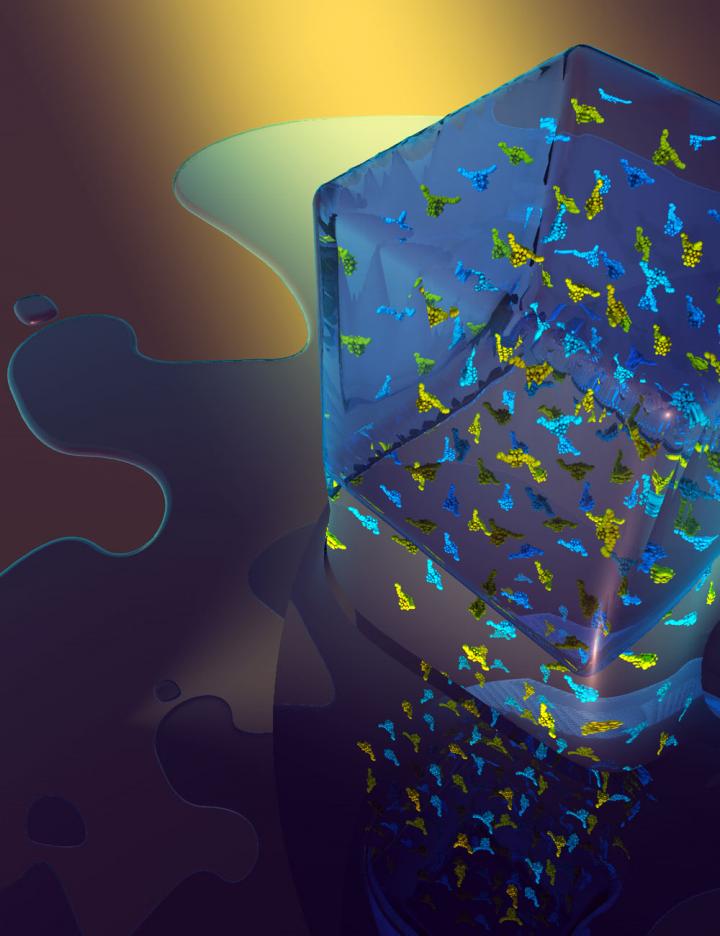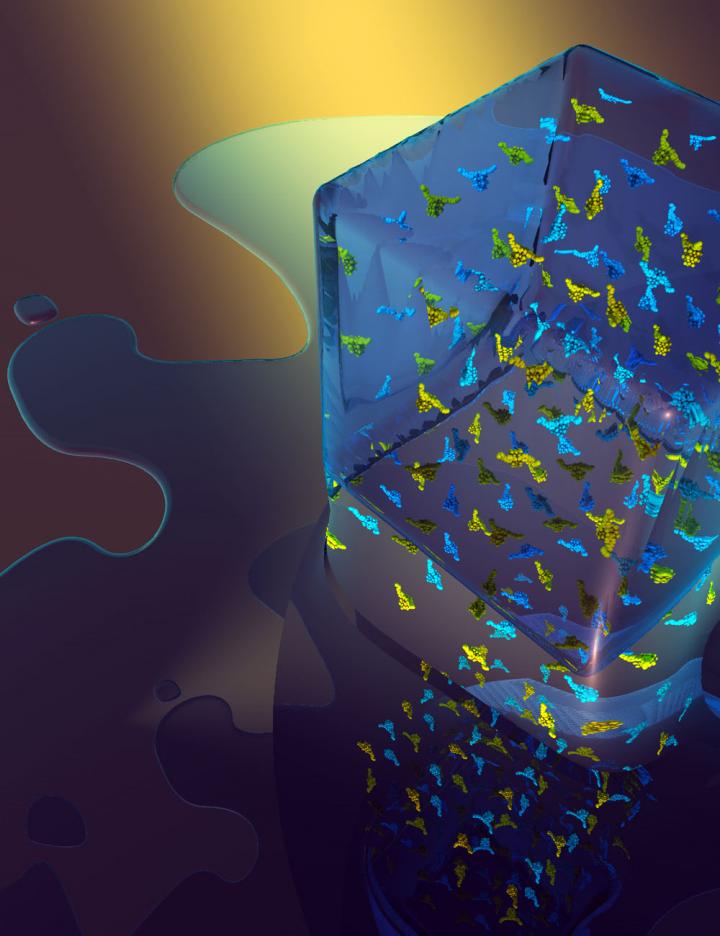
Credit: Victor Sans Sangorrin
The research, led by Dr Victor Sans Sangorrin from the Faculty of Engineering and Dr Graham Newton from the School of Chemistry, is published in the academic journal, Advanced Materials.
"This bottom-up approach to device fabrication will push the boundaries of additive manufacturing like never before. Using a unique integrated design approach, we have demonstrated functional synergy between photochromic molecules and polymers in a fully 3D-printed device. Our approach expands the toolbox of advanced materials available to engineers developing devices for real-world problems," explains Dr Sans.
To demonstrate their concept, the team developed a photoactive molecule that changes from colourless to blue when irradiated with light. The colour change can then be reversed by exposure to oxygen from the air.
The researchers then 3D-printed composite materials by combining the photoactive molecules with a tailor-made polymer, yielding a new material that can store information reversibly.
Dr Newton, said: "We can now take any molecules that change properties upon exposure to light and print them into composites with almost any shape or size. In theory, it would be possible to reversibly encode something quite complex like a QR code or a barcode, and then wipe the material clean, almost like cleaning a whiteboard with an eraser. While our devices currently operate using colour changes, this approach could be used to develop materials for energy storage and electronics."
###
The research is supported by the Leverhulme Trust, the German Academic Exchange service (DAAD) and the University of Nottingham.
More information is available from Dr. Victor Sans Sangorrin on [email protected] or 0115 7484949 or Emma Lowry, Media Relations Manager (Faculty of Engineering), University of Nottingham on [email protected] or 0115 8467156.
Media Contact
Emma Lowry
[email protected]
07-958-171-723
@UoNPressOffice
http://www.nottingham.ac.uk
Original Source
https://www.nottingham.ac.uk/News/pressreleases/2018/June/Game-changing-finding-pushes-3D-printing-to-the-molecular-limit.aspx http://dx.doi.org/10.1002/adma.201800159





